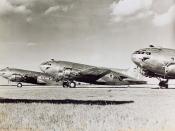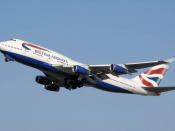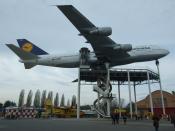The aerospace industry differs from almost all other industry in the huge costs incurred at the product development level as well as the product manufacturing level. A single airplane will have a few million parts that are expected to run better than an ordinary computer that might have a few hundred parts at most. Furthermore safety regulations allow little flexibility and the harsh procedures add to the costs of development and testing.
The production and assembly costs are also considerably huge, usually there are more than a few manufacturers and hence transportation and assembly of the final parts are increased in addition to the added problems or organizing the transportation operations, in the case of the 767 parts were transported from as far away as Japan to Seattle.
To offset these costs airplane manufacturers usually rely on developing a platform every decade or more and producing as many derivatives from that platform as possible.
In designing the platform special care is always taken in making sure the desired derivatives are easily produced, hence a general idea of the derivatives' concept is already in place. This of course adds to the effort and cost of developing platforms.
In designing a platform, the technologies needed to produce it "material technology as well as process technology" are usually designed hand in hand with the platform itself. Moreover the cost of development is added to the cost of manufacturing over a long period of time and the total averaged over the expected sales volume to derive the units cost, in this way the actual cost of the first few airplanes is usually higher than the sales price, since it would have been too expensive to try to breakeven on the first few units sold. At Boeing the cost of production is expected to decrease...


